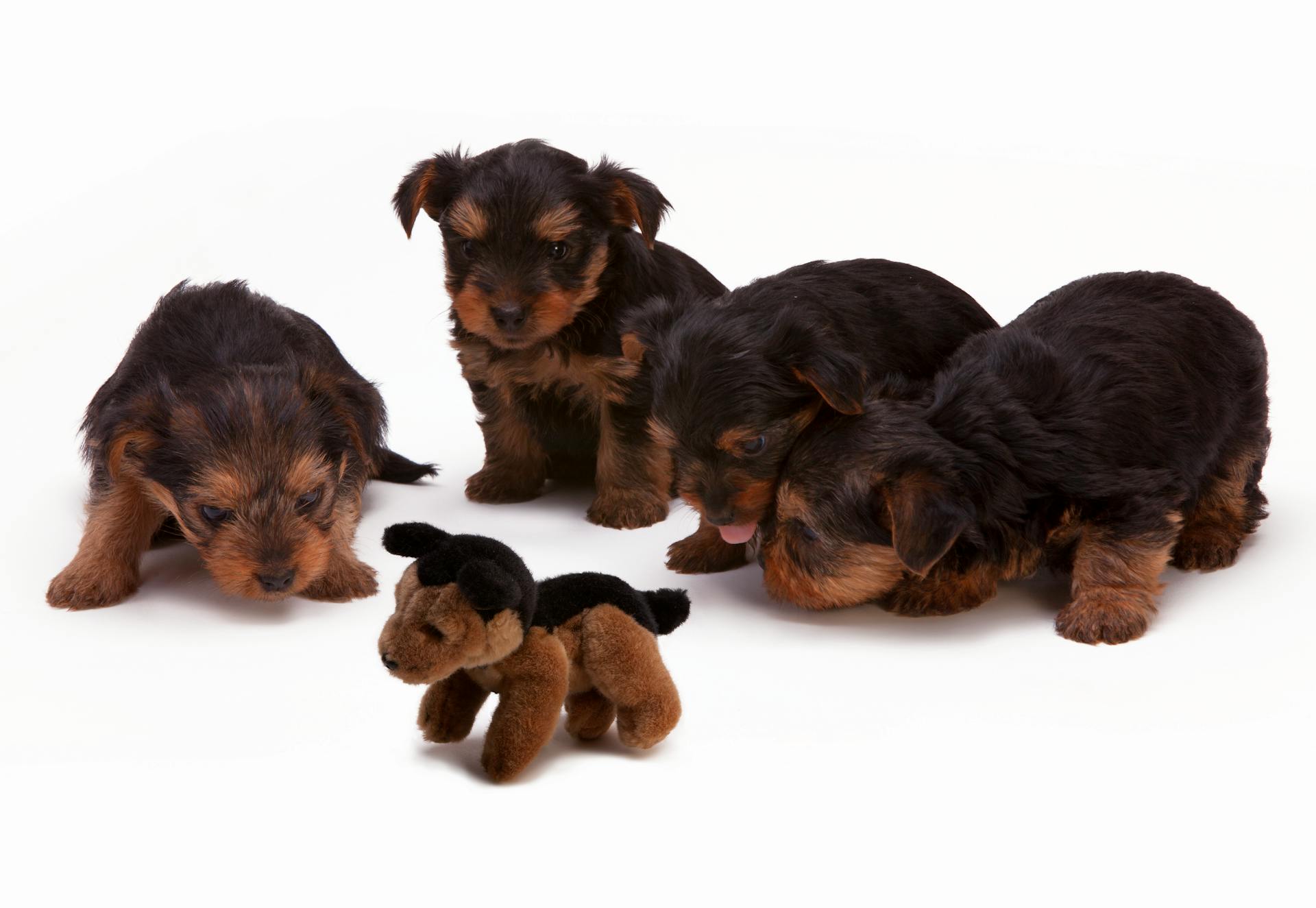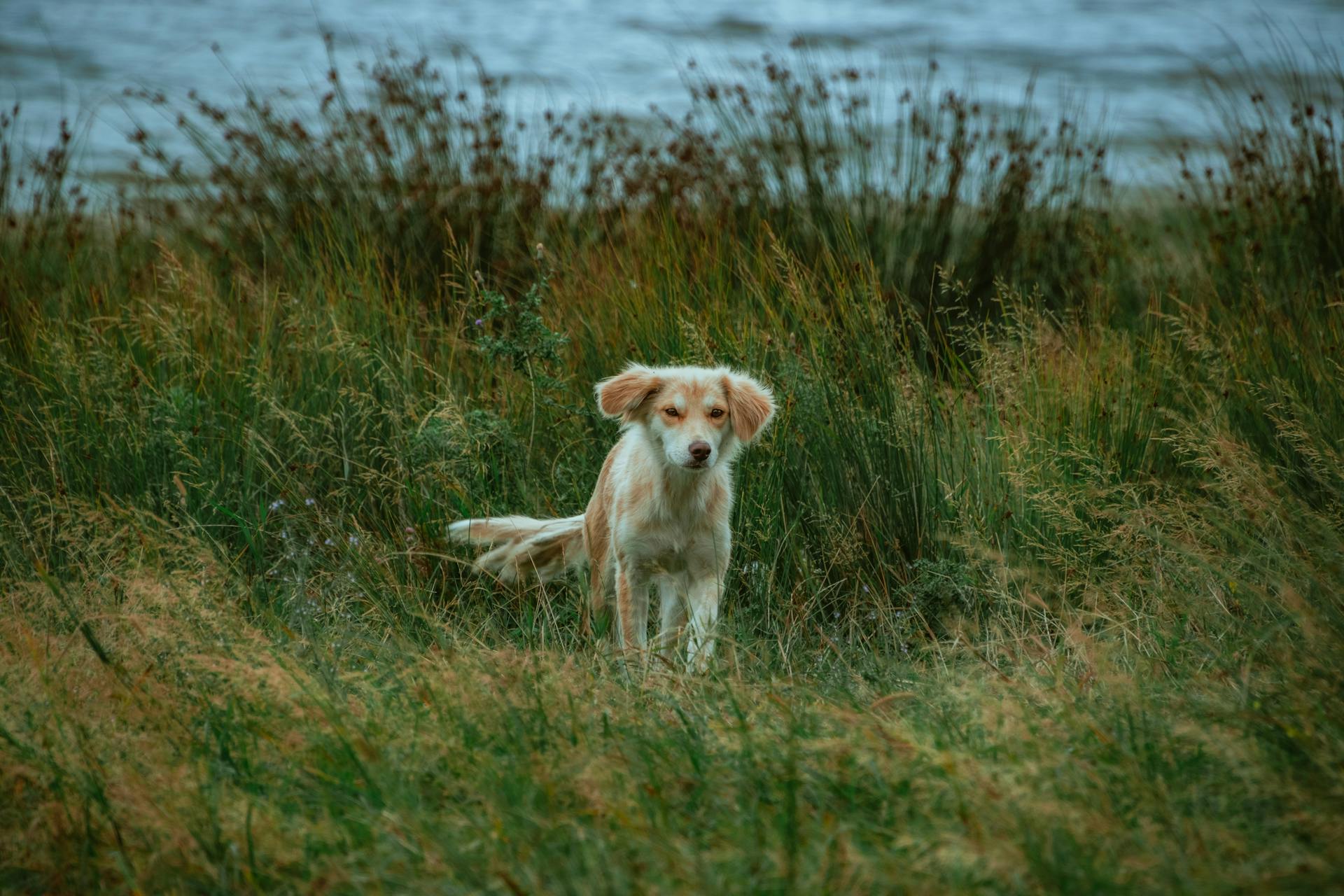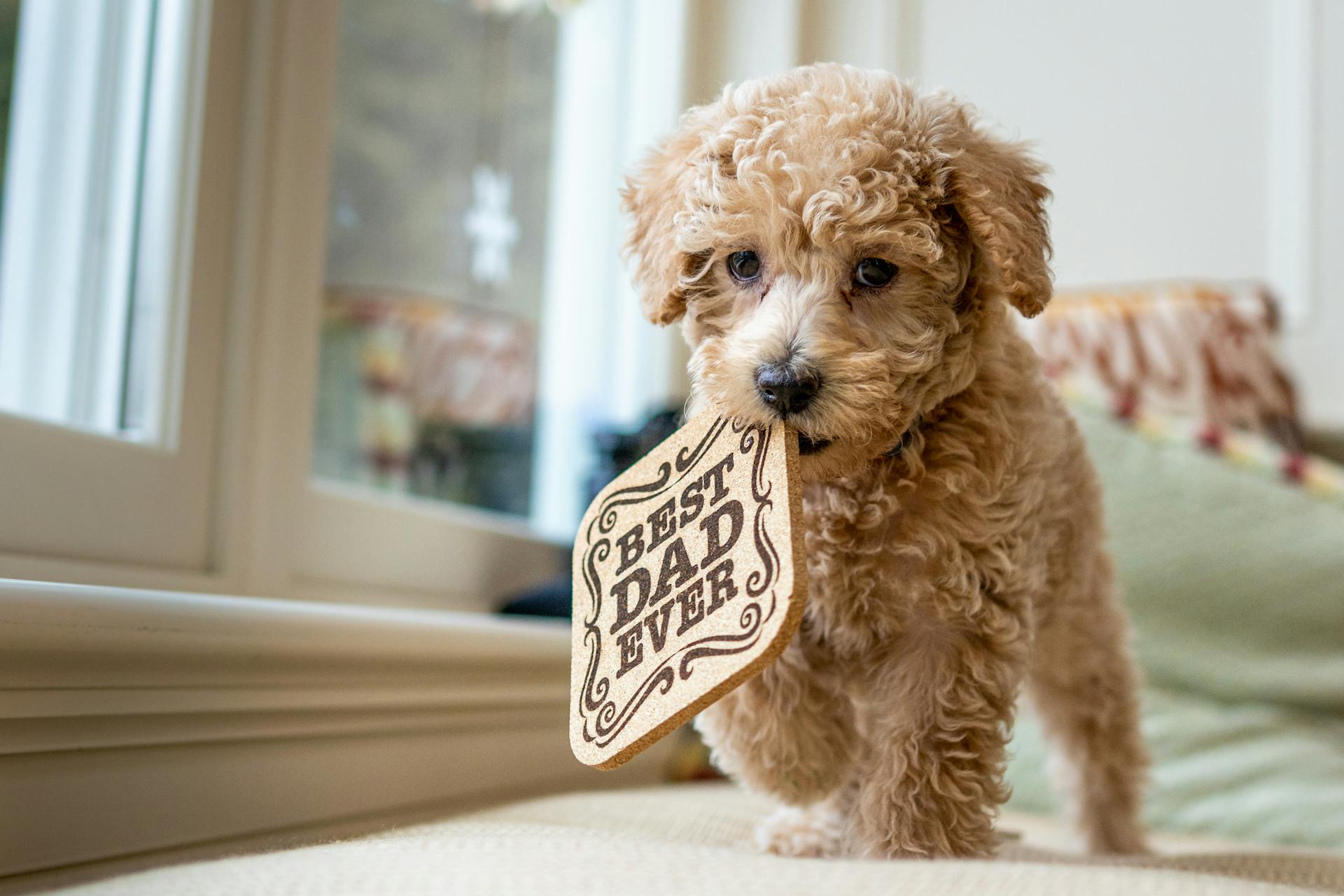
Raising happy and healthy pugs requires a lot of love, care, and attention to their specific needs. Pugs are known for their flat faces and short snouts, which can make breathing difficult, especially in hot or humid weather.
Pugs need regular exercise to stay healthy, but it's essential to keep an eye on their breathing and take breaks when needed. A short walk or playtime indoors is better than a long walk in extreme temperatures.
Pugs are prone to obesity, so it's crucial to monitor their food intake and ensure they get enough physical activity. A balanced diet and regular exercise can help prevent obesity and related health issues.
Pugs are social animals and thrive on human interaction, so make sure to spend quality time with them every day.
How to Care
Pugs are smart and quick to learn, making training a breeze.
They require minimal coat care, but a smooth coat only needs occasional brushing to remove dead hairs.
Pugs need daily exercise, either in the form of a lively game or a moderate walk.
Their wrinkles need regular cleaning and drying to prevent skin infections, which can be a challenge to manage.
Pugs don't do well in heat and humidity, so it's essential to take that into account when exercising them.
They may often wheeze and snore, but with proper care, they can live happy and healthy lives.
Grooming is relatively simple, aside from cleaning their facial wrinkles daily.
Pug Health and Wellness
Pugs are a beloved breed, but they do come with some health concerns that owners should be aware of. Pugs have a relatively long lifespan of 12-15 years, but they can be prone to certain health issues.
One of the most common health concerns for Pugs is eye problems, such as dry eye, entropion, and corneal injuries and ulcers. These issues can be caused by their prominent eyes and flat face, which can lead to tear duct problems and make them more susceptible to eye injuries.
Pugs are also at risk for brachycephalic airway syndrome, which means they can have trouble breathing, especially in hot or humid weather. This is because their short, pushed-in muzzle can cause their airways to become narrow, making it harder for them to breathe.
To keep your Pug healthy, it's essential to monitor their diet and ensure they're not overweight. Obesity can lead to a range of health problems, including skin issues and joint pain. Regular exercise and a balanced diet can help prevent these issues.
Here are some common health issues that Pugs may experience:
- Eye problems (dry eye, entropion, corneal injuries and ulcers)
- Brachycephalic airway syndrome
- Obesity
- Skin issues (allergies, infections, and dermatitis)
- Dental issues
Health
Pugs are prone to eye issues, particularly dry eye, which can be treated with medicated eye drops. Their prominent eyes make them more susceptible to eye problems, so regular check-ups are essential.
Pugs can also experience hip dysplasia, a condition where the hip joint doesn't form properly, leading to limping, pain, and arthritis. Weight reduction, physical therapy, and surgery are possible treatment options.
Patellar luxation, where the knee slides out of the joint, is another common issue in Pugs. In mild cases, pain medication and weight management can help, but surgery is often necessary for more severe cases.
Pug Dog Encephalitis (PDE) is a fatal brain disease affecting approximately 1.5% of Pugs. It's characterized by seizures, circling, blindness, and coma, and there's currently no known treatment.
Skin issues are also common in Pugs, particularly in the skin folds, which require special attention to prevent irritation and infections. Regular cleaning with mild wipes can help prevent odors and discharge.
Ear infections are another concern, as Pugs' floppy ears can harbor infections. Daily checks and gentle wiping away of debris can help prevent infections.
Allergies can cause skin redness, rash, or excessive itching in Pugs. If you notice these symptoms, it's essential to consult with a vet to determine the best course of action.
Brachycephalic Airway Syndrome is a condition caused by the Pug's short, pushed-in muzzle, making them prone to overheating and breathing difficulties. Exercise caution when exercising your Pug in warm or humid weather.
Here's a list of common health issues in Pugs:
- Eye issues
- Hip dysplasia
- Patellar luxation
- Pug Dog Encephalitis (PDE)
- Skin issues
- Ear infections
- Allergies
- Brachycephalic Airway Syndrome
Obesity is another concern in Pugs, as they can quickly gain too much weight if their meals aren't monitored. Finding the right balance between food intake and exercise is crucial for maintaining their overall health and weight.
Pugs can also be prone to skin infections, ear infections, allergies, and anal gland issues, which can occur simultaneously due to atopic dermatitis. In some cases, surgery may be necessary to resolve chronic skin infections and/or eye issues.
Dental Issues
Pugs are prone to dental issues due to their small jaw size and crowded teeth. Regular teeth brushing is crucial to prevent tartar buildup and gum disease.
Daily teeth brushing can be a manageable task if you start training your pug early. Training them to tolerate teeth brushing is similar to teaching them to sit or stay.
French Bulldog-Pug mixes, like the Frug, and other small breed dogs are particularly susceptible to dental issues. Beagles, Huskies, and Chihuahuas are also prone to dental problems when crossed with Pugs.
A diet that involves chewing can help alleviate dental issues in Pugs. Water additives can also be beneficial in maintaining their oral health.
Some popular Pug mixes include:
- French Bull Dog + Pug (Frug)
- Beagle+ Pug (Puggle)
- Husky + Pug (Hug)
- Chihuahua + Pug (Chug)
- Dachshund & Pug (Daug)
- Pomeranian & Pug (Pom-A-Pug)
Nutrition
Pugs have tremendous appetites, so it's crucial to watch their diet to prevent obesity.
Feeding your pup a well-balanced, high-quality commercial dog food formulated specifically for toy breeds is a great starting point.
Consider a formula that fits your dog's stage in life, such as puppy, adult, or senior, and follow the manufacturer's suggested serving size.
Pugs should be fed up to half a cup of dry dog food twice a day, but the amount will depend on their age, size, and activity level.
You should keep an eye on your Pug's daily calorie intake and avoid feeding too many treats or human food to prevent overeating.
Talk to your vet for recommendations on how to keep your dog fit and healthy, as they are in the best position to help you pick the right food for your dog based on their individual needs.
Getting a doggy-sized scale can help you weigh your pet and remove some of the guesswork from the feeding process.
Broaden your view: Is High Protein Dog Food Good for Dogs
Pug Grooming and Hygiene
Pugs shed year-round, making daily brushing essential to remove loose hair. A Furminator brush is a great tool for this task.
Their facial wrinkles need daily cleaning with mild wipes to prevent irritation and infections. This is especially important for Pugs with skin folds.
Pugs should have their nails trimmed every two to three weeks to prevent painful walking. You'll know it's time for a trim when you can hear their nails tapping on hard surfaces.
Monthly baths are a good idea to keep your Pug clean and healthy. Be sure to dry their wrinkles completely after bathing.
Pugs need daily dental attention to prevent serious issues later in life. Brushing their teeth while they're young can make this a pleasant experience for them.
Pug Training and Behavior
Pugs are people pleasers, and they thrive on attention and interaction. They're intelligent and sensitive, and they love to please their owners.
Early socialization is key, and taking your Pug to group training classes or dog sports can be a great way to expose them to new experiences and people. They're like little toddlers, so they need to be socialized from an early age.
Pugs are generally easy to train, but they can be strong-willed and stubborn at times. Consistent training with positive reinforcement is the way to go, and harsh training methods should be avoided.
These dogs are naturally friendly and prefer to be around people, but their facial structure does mean they can have breathing difficulties and be loud snorers.
Pug Temperaments
Pug temperaments are a unique blend of dignified and comedic personalities. They're known for being sociable companion dogs that thrive on attention.
Pugs are loyal and affectionate dogs who enjoy interacting with their owners, often exhibiting playful and mischievous behavior that makes them great company for children.
These small dogs are rarely aggressive and relatively easy to train, responding well to strong, consistent training with lots of positive reinforcement.
Pugs are intelligent and sensitive, which means they can sometimes be strong-willed and stubborn, but they'll respond to gentle guidance.
They're not prone to biting, thanks to their jaw shape, and are generally pleasant to be around, even if they do snore occasionally.
Pugs love to participate in activities with their owners, making them a great combination with kids and babies, but it's essential to teach children to handle them gently, as their eyes are vulnerable to injury.
With proper training and socialization, Pugs can become confident companions that are a joy to be around.
Exercise Needs
Pugs don't need a lot of exercise, just half an hour a day or a couple of short walks. They're happy to spend much of the day sleeping on the sofa.
Pugs aren't tolerant of hot weather, so they should avoid too much outdoor exertion during hot summer days. They can easily overheat.
Games of fetch and tug of war are great alternative activities to help them stay healthy. These games are a fun way to get them moving without exerting themselves too much.
Moderate daily exercise, like play sessions in the backyard or walks, is just right for pugs. It's essential to balance their love of food with regular physical activity to prevent obesity.
Related reading: What Were You Just Doing with the Dog?
Pug Adoption and Purchase
If you're looking to bring a Pug into your family, it's essential to do your research and find a reputable breeder or adoption organization.
Avoid pet stores at all costs, as they often source puppies from irresponsible breeders who prioritize profits over the health and well-being of the dogs.
Contact The Pug Dog Club of America or a local pug rescue group to start the adoption process, and you'll be well on your way to finding your new furry friend.
Consider reading: White Poodle Dog
Adopt/Buy
If you're set on bringing a Pug into your life, you have two main options: adoption or purchase.
Avoid pet stores, as they often source from unscrupulous breeders who may prioritize profits over the health and well-being of the puppies.
To find a healthy Pug puppy, look for a reputable breeder who can provide an accurate health history.
If adoption is more your speed, start by contacting The Pug Dog Club of America or a local pug rescue group.
Discover more: Black Pug Dog Images
How Many Puppies?
When adopting a Pug, one of the first things you might wonder is how many puppies to expect. The average size of a Pug litter is between four to six puppies.
Pug litters can vary in size, and some may be smaller than others. A litter can be as small as one or two puppies.
Pug litters can also be quite large, with some litters reaching up to nine or 10 puppies.
Health Problems
As a responsible pug breeder, it's essential to be aware of the potential health problems that can affect your furry friends. Pugs are prone to eye issues, such as redness, discharge, squinting, or cloudiness, which can be a sign of dry eye or other conditions.
Pug life expectancy is about 13 to 15 years, but unfortunately, they're also susceptible to certain health issues. Hip dysplasia, patellar luxation, and Pug Dog Encephalitis (PDE) are just a few of the conditions that can affect your pug's quality of life.
Pugs are also prone to skin issues, such as skin infections, allergies, and dermatitis, which can be caused by food allergies or environmental factors. Regular cleaning of their facial wrinkles and around the genitals can help prevent skin infections.
Another common health issue in pugs is brachycephalic airway syndrome, which can cause breathing difficulties and overheating. It's crucial to exercise your pug in a well-ventilated area and avoid exercising them in warm or humid weather.
Here are some common health issues in pugs, along with their symptoms and potential treatments:
By being aware of these potential health issues, you can take steps to prevent or manage them, ensuring your pug lives a happy and healthy life.
Frequently Asked Questions
What is the price lifespan of a Pug?
A Pug's average lifespan is 13-15 years, despite its small size. Learn more about common health issues that can affect this beloved breed.
How to tell if a Pug is purebred?
To identify a purebred Pug, look for thick, strong legs, deep facial wrinkles, and moles on the cheeks. A purebred Pug's sturdy build and distinctive facial features are key indicators of its authenticity.
Featured Images: pexels.com


